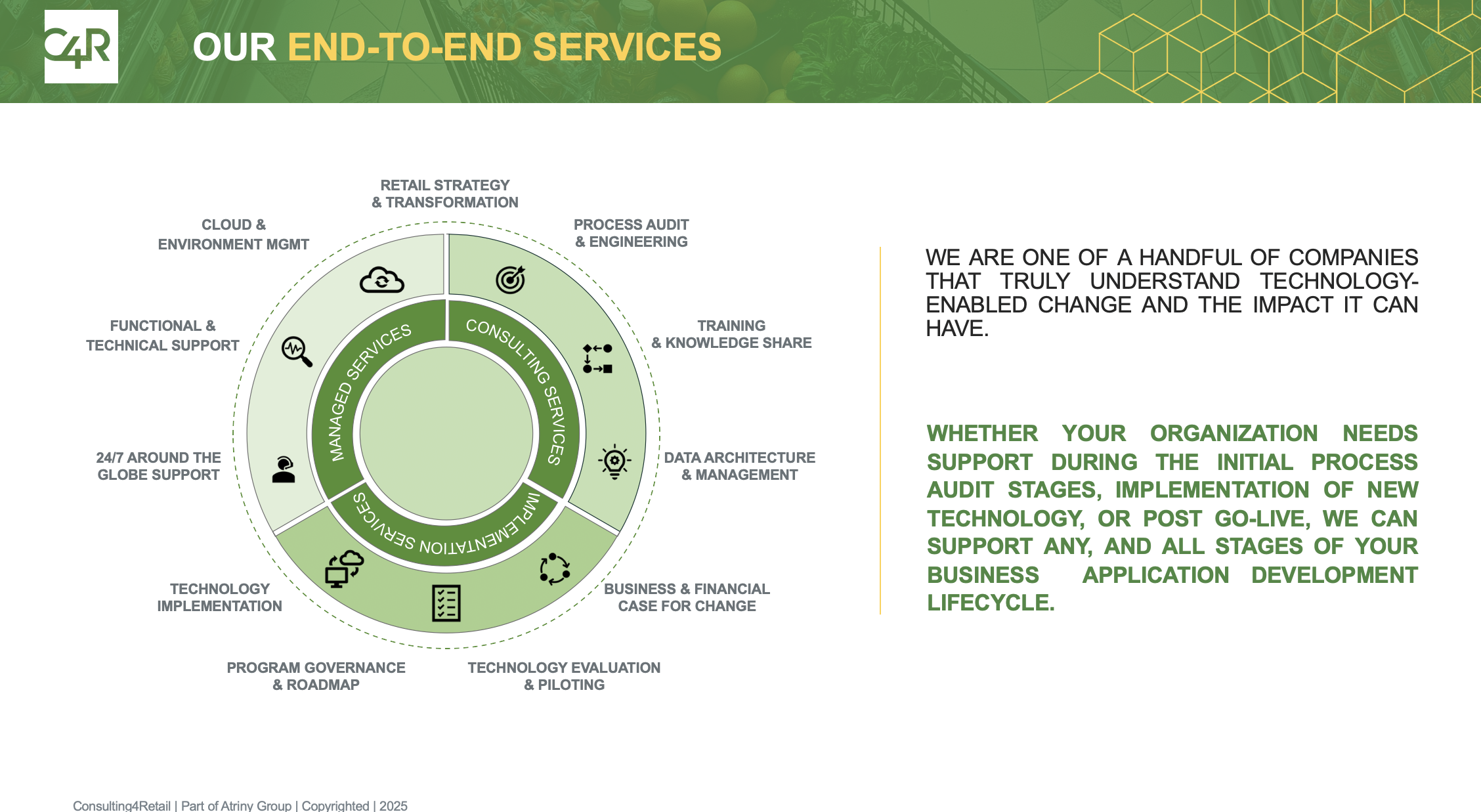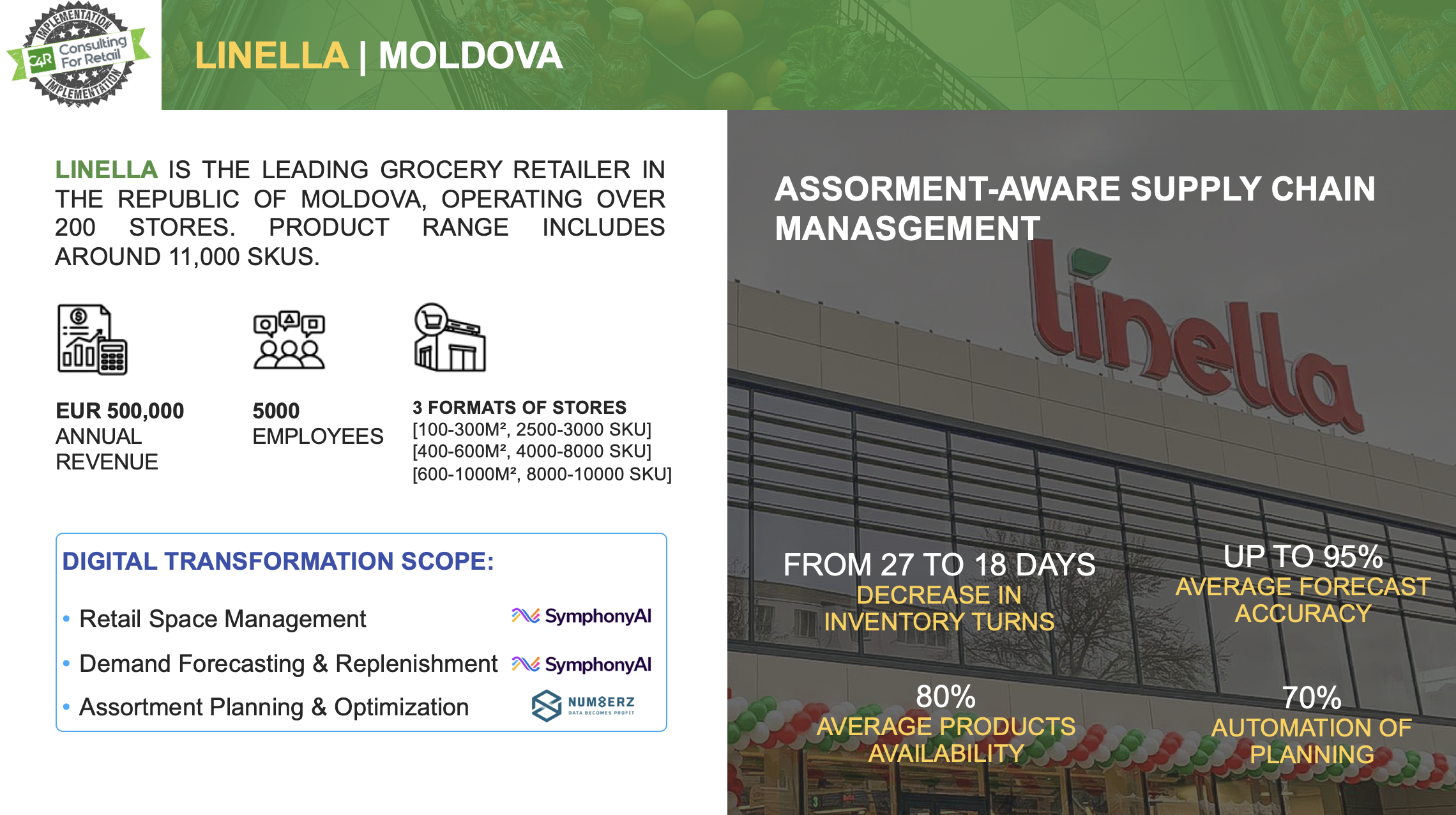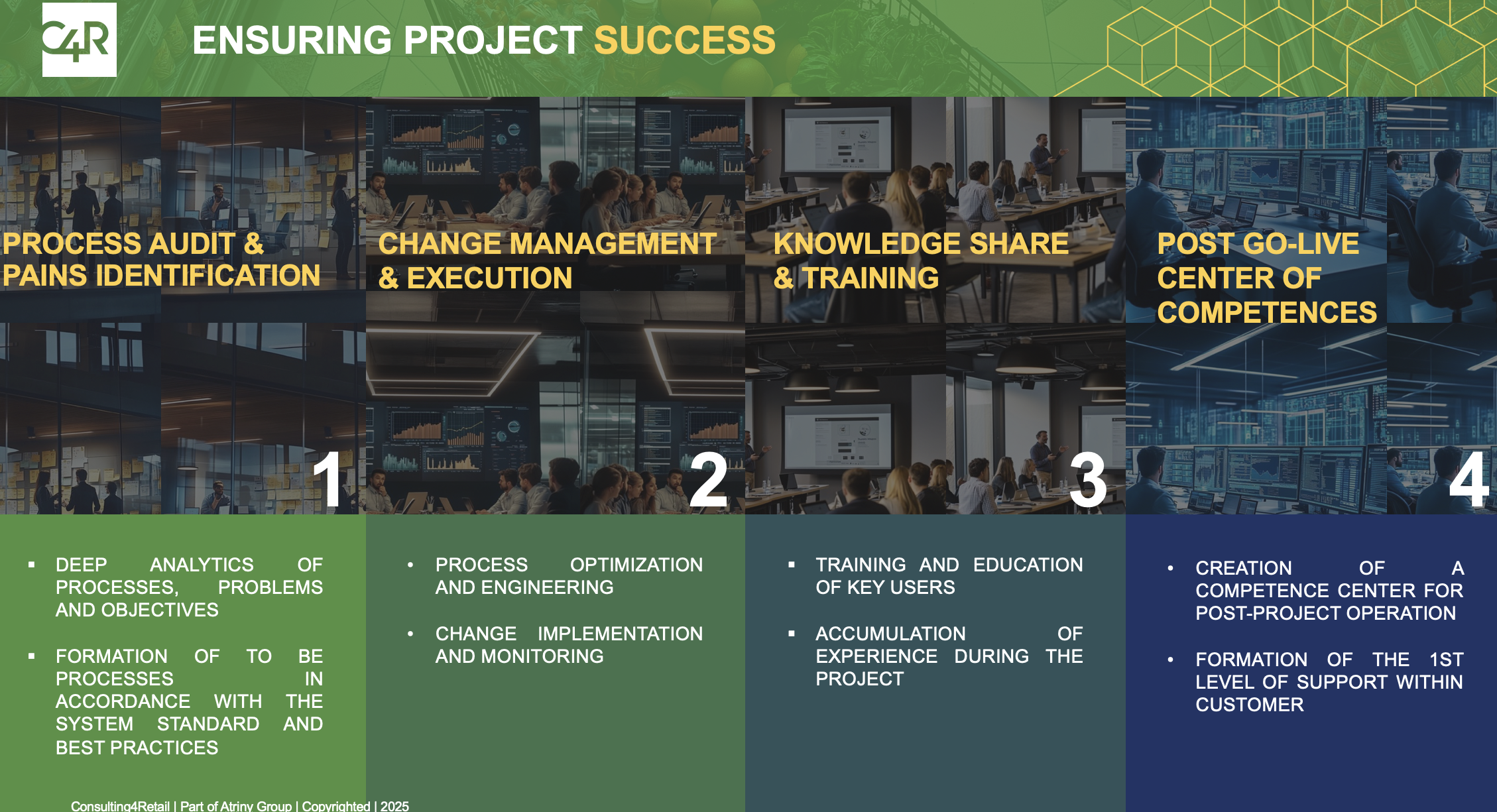
Respublika Park shopping mall presents documentary film about veteran Stepan Korobkin who conquered Kilimanjaro


 18.04.2025 09:01
18.04.2025 09:01Stan Krupnik, Chief Commercial and Marketing Officer at Consulting4Retail, a company that has been driving digital transformation in retail and trading networks for over 10 years, shared insights on how to meet customer demands, attract traffic, and adopt modern digital technologies to optimize business operations.
Consulting4Retail (C4R), part of the international Atriny Group, provides IT solutions and consulting services for the digitalization and increased efficiency of retail and wholesale businesses. With over 10 years in the market, C4R has completed over 200 successful projects and helped 60 clients navigate business and digital transformation. A team of over 100 experienced professionals collaborates with leading software providers such as SymphonyAI, Slimstock, Competera, Num8erz, Colleqtive, and Microsoft, delivering effective results for clients. In Ukraine, the company works with major players such as ATB, Novus, Silpo, Tavria V, Sim23, and Aurora, among others.
In an interview with RAU, Stan Krupnik shared how digital transformation can optimize processes, improve assortment planning, and boost business performance.
— To begin with, how important is proper assortment planning in retail?
– Assortment is a key element of retail operations, as it ensures the right products are available to meet customer demands and drive revenue. Assortment management also plays a central role in various planning processes such as inventory management, pricing, demand forecasting, and space planning. It involves deciding which products to offer, how many units to supply, where to place items on shelves, and how to adjust assortments based on seasonality, trends, and customer preferences.
Assortment management is vital as it allows retailers to tailor product offerings to specific geographic locations or sales channels.
— What problems do retailers currently face in assortment planning?
– Retailers encounter several challenges when planning assortments and category management. One major internal difficulty is coordination between teams like commercial, procurement, logistics, and space management. It’s not enough to create a high-quality assortment—you must also ensure it reaches the store at the right time and is placed correctly, so the customer can easily find the needed product.
Another significant issue is the ability of the commercial team to deeply analyze the demand of a specific customer group within a cluster of stores. Understanding whether a category performs well at a regional or store-group level is the starting point for crafting an in-demand offering and driving effective sales.
Other key issues include ensuring the ordered assortment is in stock, determining the right inventory levels for each delivery period, and maintaining in-store processes to keep shelves restocked on time.
From a budgeting perspective, one of the main challenges is balancing budgets between regular assortment sales and promotional activities without cannibalizing each other. This requires a data-driven approach, a clear understanding of customer segments, effective internal coordination during the assortment and promotion planning cycles, and alignment between planning teams.

— What aspects should be considered when shaping the assortment offering?
– There are many, and the deeper we analyze customer needs and align them with our costs, the more efficient the business becomes and the more satisfied the customers are. Important factors to consider include:
— What can help modern retailers offer optimal assortments, reduce costs, and increase profits?
– Undoubtedly, internal employee expertise, an understanding of processes, and a clear grasp of one’s market uniqueness play an extremely important role. However, to support the scaling of a business and its retail network, it is critically important to efficiently and swiftly adopt modern technology platforms available on the market.
Retailers can optimize their offerings and reduce costs using various technologies. There are several examples that can be used for assortment planning, promotion management, and the creation of personalized offers:
Integrating such tools into your business strategy enables better assortment decisions and boosts both customer acquisition and retention.
— What innovative projects has your company delivered in recent years?
– One of the most recent projects I can highlight is with the Linella retail chain in Moldova. The company is a market leader, holding over 30% market share, and faced a major challenge in reclaiming its competitive edge while scaling its store network. Linella implemented innovative and integrated supply chain management platforms based on optimized assortment and retail space. Currently, the team is rolling out our new data management platform.

Another large-scale, complex, yet incredibly exciting project was the comprehensive transformation of the Bravo retail chain in Azerbaijan, the country’s second-largest retailer. Together with us, Bravo step by step implemented and adapted a wide range of solutions — from warehouse management systems, demand forecasting, and inventory management to cutting-edge tools for promotion optimization.
Also worth mentioning is our project with Anvar, a regional chain in Kazakhstan. In less than a year, we implemented an integrated platform covering everything from store space optimization and assortment clustering to supply chain optimization.
We have several active projects in Ukraine that I can’t disclose just yet – but we’re seeing strong demand for pricing management platforms, and all things related to assortment and promotions optimization.
— At what stage should a retailer start considering the integration of innovative tools for assortment management and overall business optimization? Should they factor in company size and scaling plans?
– You can start thinking about it at any stage, but there’s a good saying – the earlier, the better. In general, integrating innovative tools for assortment management and business optimization is an important step for any retailer looking to enhance their competitiveness. The decision to implement such tools depends on numerous factors, including the company’s and network’s expansion plans. There are a few key points to realize and understand:
Thus, a retailer should make the decision to implement innovative tools based on a comprehensive analysis of the current state of the business and its strategic plans for the future.

– Finally, could you please share how retailers can successfully navigate the path of digital transformation in a turbulent environment and with a large number of daily operational tasks?
– Digital transformation is a very serious step for any retail business, especially in times of instability and a heavy load of operational tasks. Here are several key steps that can help businesses successfully navigate this path:
Many other aspects could be discussed for hours. By following these fundamental steps, retailers can steadily grow amid turbulence and innovation, efficiently manage operational tasks, and achieve success in digital transformation. And if you need help along the way or are striving to reach a new level of digitalization and company development, we’ll be happy to assist you – just reach out.





